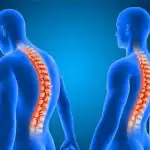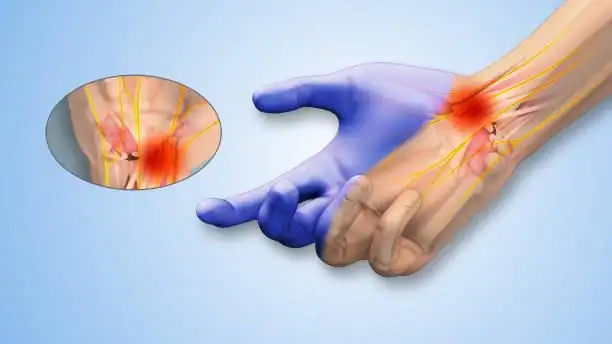
Neuropathy Pain Management Without Heavy Medications
September 16, 2025
Neuropathy vs. Sciatica: Key Differences Explained
October 17, 2025The nerve damage or neuropathy can feel so fixed that a patient feels helpless, but the truth is not quite so simple. Some of the nerves repair or regrow once the offending cause has been corrected and should be supported by the proper habits on the part of the individual. In other instances, long-standing or severe damage turns into a slowing of progression and improvement in function and comfort. Being well informed about what lifestyle changes can do and when clinical care should be added will set you on your own realistic, proactive, and result-driven path.
Changes in Way of Life
Lifestyle affects everything from inflammation to circulation to supplying the proper nutrients that the nerves need to maintain or rebuild their protective myelin sheath. Diet would be at the top in affecting this. Emphasizing the B vitamins—B12, B1, and B6—is pivotal in nerve signaling and the integrity of myelin. In contrast, vitamins C and E, along with antioxidant-rich foods, can help reduce oxidative stress that can damage nerve tissue. Equally practical would be getting those nutrients from foods such as dairy products, fish, soybeans, whole grains, nuts, fruits, and teas, and getting antioxidants from multicolored produce like carrots and berries.
Exercise increases blood flow to the peripheral nerves, promotes the creation of growth factors for regeneration, and lowers pain sensitivity with time. Being a blend of aerobic workouts of low impact, gentle strength training, and balance work is a potential smart template; meanwhile, adjustments are necessary per the current ability level. To conclude, quitting alcohol or substance use protects the fragile nerve tissue.
When Lifestyle Changes Aren’t Enough
Lifestyle changes are meaningful in improving nerve functions, but the more established cases generally would require adjunct clinical care. A comprehensive integrative approach would indeed make a difference there. In peripheral neuropathy clinics, such as Restore Wellness Center, healing is tailored to the patient’s specific diagnosis, in accordance with regenerative medicine treatments.
In some patients, IV therapy might be the most efficient way to get key nutrients into the bloodstream, and bracing could help stabilize or support painful areas to block these from worsening through recovery. Clinics will occasionally discuss stem cell therapy for nerve damage as a potential way to induce healing responses, and a nerve stimulator for neuropathy might also aid in pain relief and function restoration by modulating pain pathways.
Can Nerve Damage Be Reversed?
Reversal depends on its cause and severity. Consistent lifestyle modifications appear to lead to a degree of recovery, with the acceptance that sometimes a partial or total reversal of symptoms occurs. In diabetic neuropathy, sustained glucose control usually implies integrating diet and exercise so that symptoms are either stabilized or improved.
Hence, habits and professional care feed off one another. Lifestyle interventions amend the biological environment so nerves can complete their repair. In contrast, clinic-based therapies may boost blood flow, reduce inflammation, and in some scenarios directly stimulate or help with nerve repair. Once aligned and monitored, shared learning may allow for the adjustment of potential early wins and nurturing them over a period of weeks, in contrast to days. Time consideration is critical; the sooner you work to eliminate the causative factor and improve nerve health, the better your chances of a successful recovery.
Starting Off
Start with an accurate assessment. Suspect neuropathy versus a confirmed diagnosis; a multiplicity of contributing factors often is clarified in an environment experienced in nerve and circulation issues. At Restore Wellness Center, patients receive individualized plans that include vein and circulation treatments, such as RFA, intravenous infusions, metabolic and nutritional support, bracing when indicated, and encouragement to make daily habit changes. Most services are available with options such as free screenings, with some being eligible for insurance or Medicare coverage.
At home, brew some ginger or herbal teas if you want to drink those. Hydrate well. Lastly, moving around should feel manageable with your current level of energy and pain. Rather than perfecting it instantaneously, go for regular progress. Keep a log of symptom frequency and intensity: tingling, burning, numbness, and changes in balance so that your care team can alter the plan as is suitable. If a candidate for restorative treatment is to be made eligible, regenerative medicine treatment approaches could be thoughtfully considered as part of the treatment, along with discussions of stem cell therapy for nerve damage or a nerve stimulator for neuropathy, with the hope that the injury in question might improve.
Quite simply, lifestyle changes can sometimes offer their own healing power to nerve recovery, especially when working in tandem with personalized clinical care. By finding their own causes, combining optimal everyday habits, and looking toward particular therapies with a qualified team such as Restore Wellness Center, many experience less pain, improved functions, and a meaningful direction toward recovery.
Want to Know If Nerve Damage Can Be Reversed?
Contact Restore Wellness Center today to discuss personalized treatment options for neuropathy and nerve repair. Our team is here to guide your recovery.

